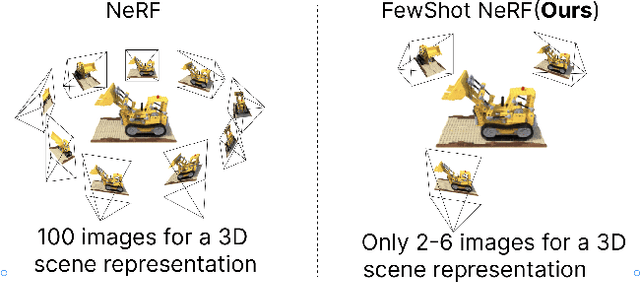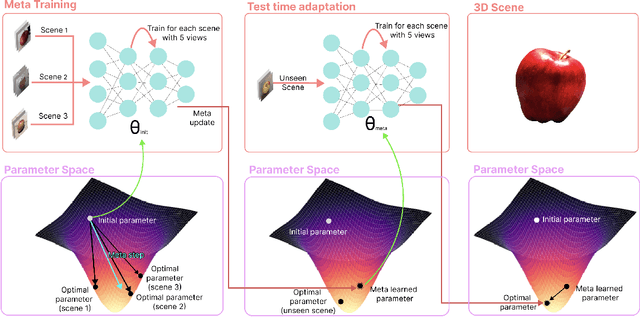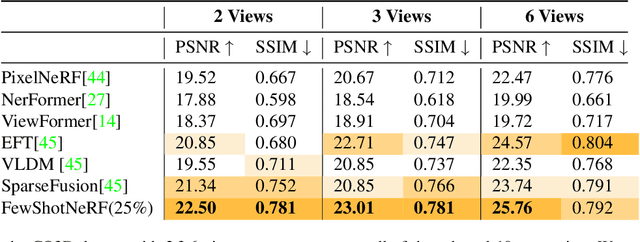Thanuja Ambegoda
FewShotNeRF: Meta-Learning-based Novel View Synthesis for Rapid Scene-Specific Adaptation
Aug 09, 2024



Abstract:In this paper, we address the challenge of generating novel views of real-world objects with limited multi-view images through our proposed approach, FewShotNeRF. Our method utilizes meta-learning to acquire optimal initialization, facilitating rapid adaptation of a Neural Radiance Field (NeRF) to specific scenes. The focus of our meta-learning process is on capturing shared geometry and textures within a category, embedded in the weight initialization. This approach expedites the learning process of NeRFs and leverages recent advancements in positional encodings to reduce the time required for fitting a NeRF to a scene, thereby accelerating the inner loop optimization of meta-learning. Notably, our method enables meta-learning on a large number of 3D scenes to establish a robust 3D prior for various categories. Through extensive evaluations on the Common Objects in 3D open source dataset, we empirically demonstrate the efficacy and potential of meta-learning in generating high-quality novel views of objects.
Few-shot Multispectral Segmentation with Representations Generated by Reinforcement Learning
Nov 20, 2023



Abstract:The task of multispectral image segmentation (segmentation of images with numerous channels/bands, each capturing a specific range of wavelengths of electromagnetic radiation) has been previously explored in contexts with large amounts of labeled data. However, these models tend not to generalize well to datasets of smaller size. In this paper, we propose a novel approach for improving few-shot segmentation performance on multispectral images using reinforcement learning to generate representations. These representations are generated in the form of mathematical expressions between channels and are tailored to the specific class being segmented. Our methodology involves training an agent to identify the most informative expressions, updating the dataset using these expressions, and then using the updated dataset to perform segmentation. Due to the limited length of the expressions, the model receives useful representations without any added risk of overfitting. We evaluate the effectiveness of our approach on several multispectral datasets and demonstrate its effectiveness in boosting the performance of segmentation algorithms.
 Add to Chrome
Add to Chrome Add to Firefox
Add to Firefox Add to Edge
Add to Edge